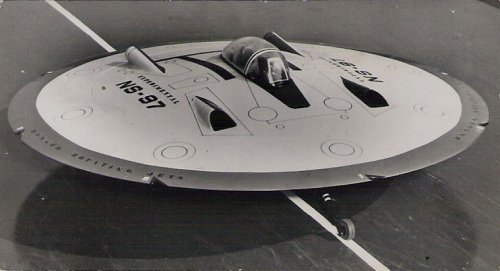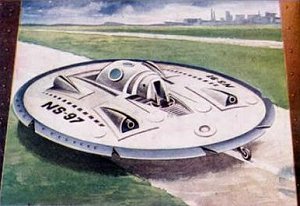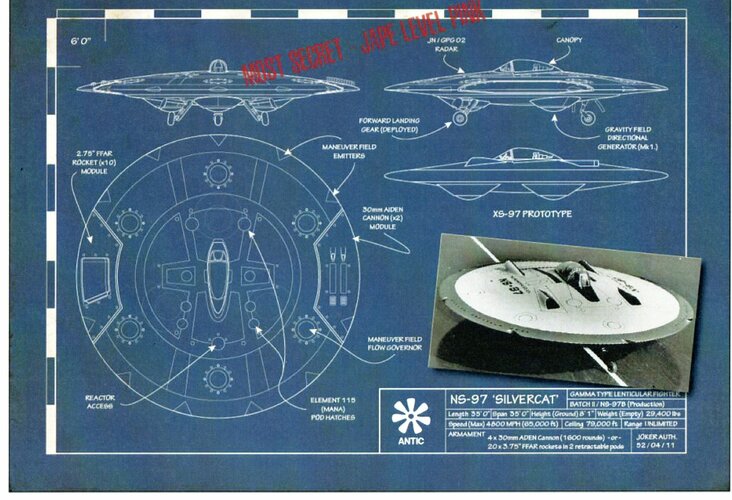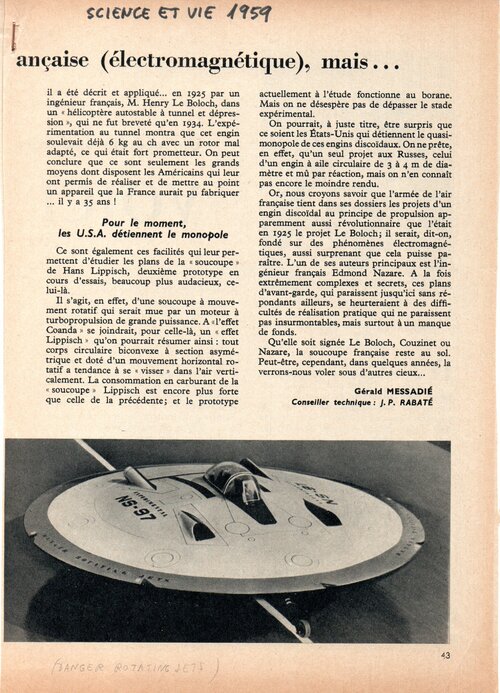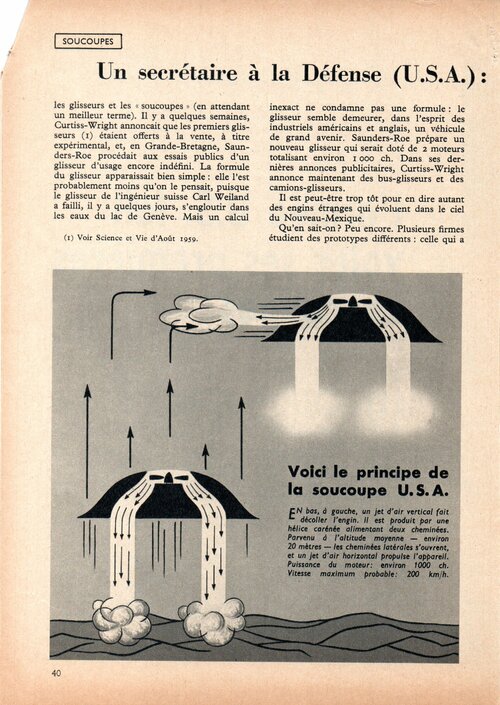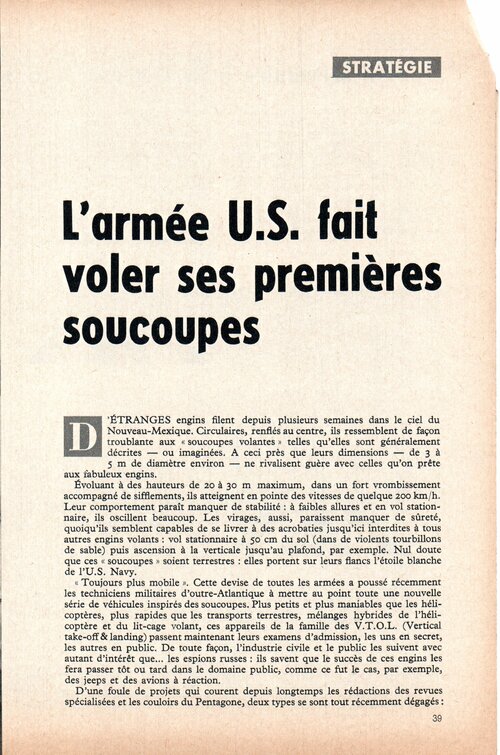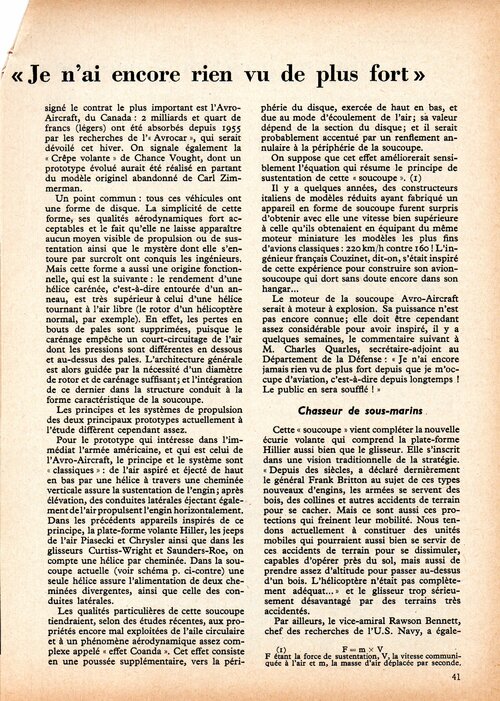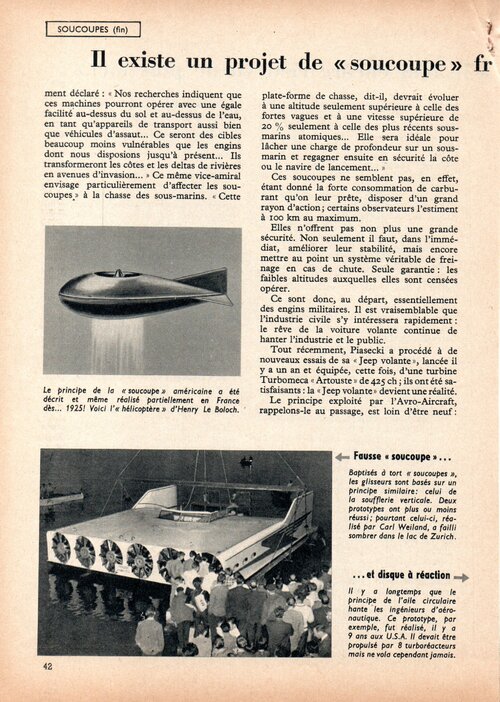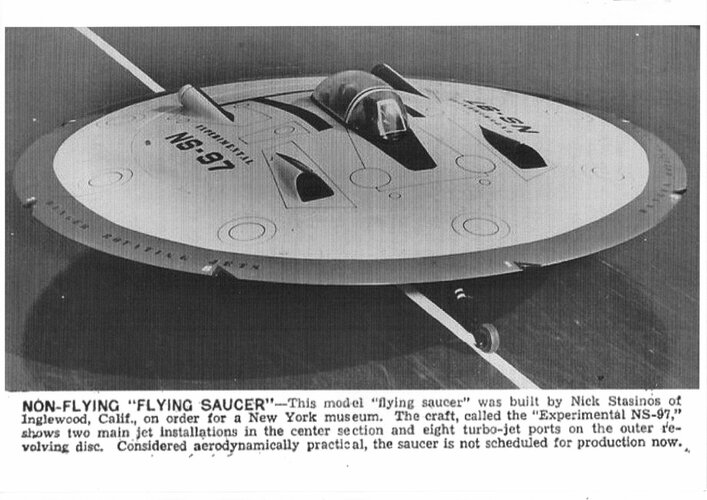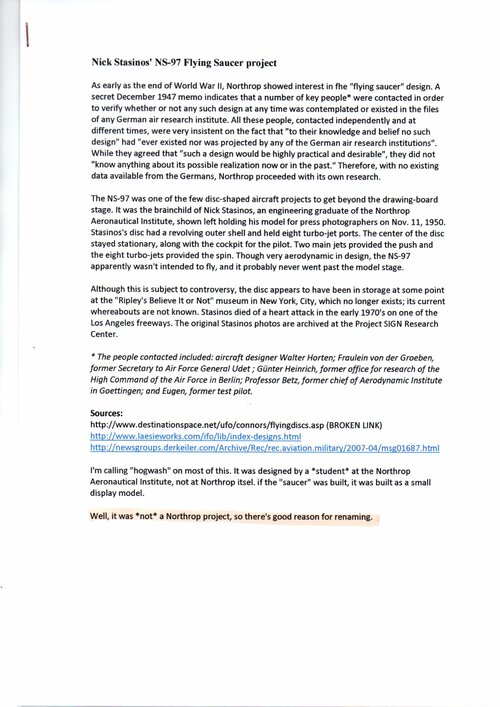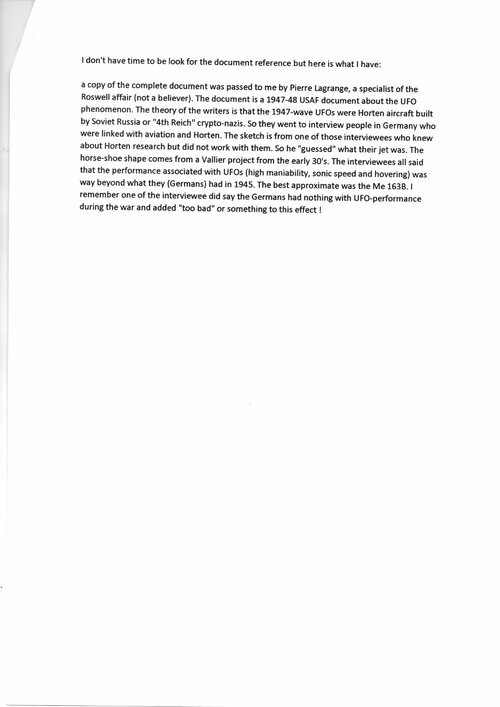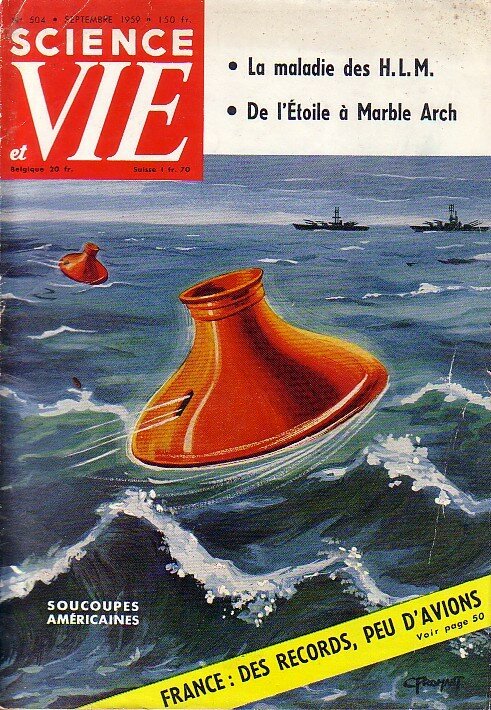- Joined
- 25 June 2009
- Messages
- 14,142
- Reaction score
- 4,334
As early as the end of World War II, Northrop showed interest in fhe "flying saucer" design. A secret December 1947 memo indicates that a number of key people* were contacted in order to verify whether or not any such design at any time was contemplated or existed in the files of any German air research institute. All these people, contacted independently and at different times, were very insistent on the fact that "to their knowledge and belief no such design" had "ever existed nor was projected by any of the German air research institutions". While they agreed that "such a design would be highly practical and desirable", they did not "know anything about its possible realization now or in the past." Therefore, with no existing data available from the Germans, Northrop proceeded with its own research.
The NS-97 was one of the few disc-shaped aircraft projects to get beyond the drawing-board stage. It was the brainchild of Nick Stasinos, an engineering graduate of the Northrop Aeronautical Institute, shown left holding his model for press photographers on Nov. 11, 1950. Stasinos's disc had a revolving outer shell and held eight turbo-jet ports. The center of the disc stayed stationary, along with the cockpit for the pilot. Two main jets provided the push and the eight turbo-jets provided the spin. Though very aerodynamic in design, the NS-97 apparently wasn't intended to fly, and it probably never went past the model stage.
Although this is subject to controversy, the disc appears to have been in storage at some point at the "Ripley's Believe It or Not" museum in New York, City, which no longer exists; its current whereabouts are not known. Stasinos died of a heart attack in the early 1970's on one of the Los Angeles freeways. The original Stasinos photos are archived at the Project SIGN Research Center.
* The people contacted included: aircraft designer Walter Horten; Fraulein von der Groeben, former Secretary to Air Force General Udet ; Günter Heinrich, former office for research of the High Command of the Air Force in Berlin; Professor Betz, former chief of Aerodynamic Institute in Goettingen; and Eugen, former test pilot.
Sources:
http://www.destinationspace.net/ufo/connors/flyingdiscs.asp (BROKEN LINK)
http://www.laesieworks.com/ifo/lib/index-designs.html
http://newsgroups.derkeiler.com/Archive/Rec/rec.aviation.military/2007-04/msg01687.html
The real NS-97 (top) and an artist's version of the same picture for the 'Soucoupes Volantes' image series produced for the French company Biscottes d'Or in the 1950s (bottom).
The NS-97 was one of the few disc-shaped aircraft projects to get beyond the drawing-board stage. It was the brainchild of Nick Stasinos, an engineering graduate of the Northrop Aeronautical Institute, shown left holding his model for press photographers on Nov. 11, 1950. Stasinos's disc had a revolving outer shell and held eight turbo-jet ports. The center of the disc stayed stationary, along with the cockpit for the pilot. Two main jets provided the push and the eight turbo-jets provided the spin. Though very aerodynamic in design, the NS-97 apparently wasn't intended to fly, and it probably never went past the model stage.
Although this is subject to controversy, the disc appears to have been in storage at some point at the "Ripley's Believe It or Not" museum in New York, City, which no longer exists; its current whereabouts are not known. Stasinos died of a heart attack in the early 1970's on one of the Los Angeles freeways. The original Stasinos photos are archived at the Project SIGN Research Center.
* The people contacted included: aircraft designer Walter Horten; Fraulein von der Groeben, former Secretary to Air Force General Udet ; Günter Heinrich, former office for research of the High Command of the Air Force in Berlin; Professor Betz, former chief of Aerodynamic Institute in Goettingen; and Eugen, former test pilot.
Sources:
http://www.destinationspace.net/ufo/connors/flyingdiscs.asp (BROKEN LINK)
http://www.laesieworks.com/ifo/lib/index-designs.html
http://newsgroups.derkeiler.com/Archive/Rec/rec.aviation.military/2007-04/msg01687.html
The real NS-97 (top) and an artist's version of the same picture for the 'Soucoupes Volantes' image series produced for the French company Biscottes d'Or in the 1950s (bottom).

